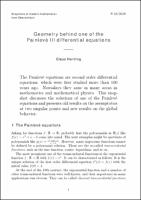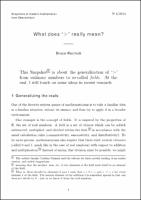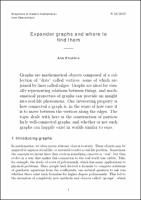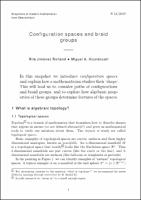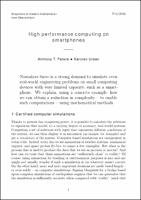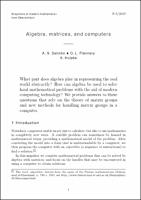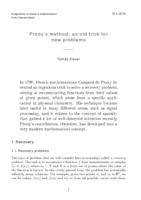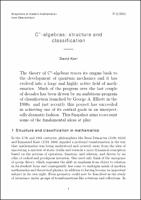Search
Now showing items 61-70 of 157
Geometry behind one of the Painlevé III differential equations
[SNAP-2018-010-EN] (Mathematisches Forschungsinstitut Oberwolfach, 2018-06-20)
The Painlevé equations are second order differential
equations, which were first studied more than 100
years ago. Nowadays they arise in many areas in
mathematics and mathematical physics. This snapshot
discusses the ...
What does ">" really mean?
[SNAP-2014-004-EN] (Mathematisches Forschungsinstitut Oberwolfach, 2014)
This Snapshot is about the generalization of ">" from ordinary numbers to so-called fields. At the end, I will touch on some ideas in recent research.
Expander graphs and where to find them
[SNAP-2019-016-EN] (Mathematisches Forschungsinstitut Oberwolfach, 2019-11-22)
Graphs are mathematical objects composed of a collection
of “dots” called vertices, some of which are
joined by lines called edges. Graphs are ideal for visually
representing relations between things, and mathematical ...
Configuration spaces and braid groups
[SNAP-2019-011-EN] (Mathematisches Forschungsinstitut Oberwolfach, 2019-10-08)
In this snapshot we introduce configuration spaces
and explain how a mathematician studies their ‘shape’.
This will lead us to consider paths of configurations
and braid groups, and to explore how algebraic properties
of ...
The Interaction of Curvature and Topology
[SNAP-2019-020-EN] (Mathematisches Forschungsinstitut Oberwolfach, 2019-12-18)
In this snapshot we will outline the mathematical
notion of curvature by means of comparison geometry.
We will then try to address questions as the ways in
which curvature might influence the topology of a
space, and ...
High performance computing on smartphones
[SNAP-2016-006-EN] (Mathematisches Forschungsinstitut Oberwolfach, 2016)
Nowadays there is a strong demand to simulate even real-world engineering problems on small computing devices with very limited capacity, such as a smartphone. We explain, using a concrete example, how we can obtain a ...
Algebra, matrices, and computers
[SNAP-2019-005-EN] (Mathematisches Forschungsinstitut Oberwolfach, 2019-05-03)
What part does algebra play in representing the real
world abstractly? How can algebra be used to solve
hard mathematical problems with the aid of modern
computing technology? We provide answers to these
questions that ...
Prony’s method: an old trick for new problems
[SNAP-2018-004-EN] (Mathematisches Forschungsinstitut Oberwolfach, 2018-03-06)
In 1795, French mathematician Gaspard de Prony invented
an ingenious trick to solve a recovery problem,
aiming at reconstructing functions from their values
at given points, which arose from a specific application
in ...
Searching for structure in complex data: a modern statistical quest
[SNAP-2021-003-EN] (Mathematisches Forschungsinstitut Oberwolfach, 2021-03-29)
Current research in statistics has taken interesting
new directions, as data collected from scientific studies
has become increasingly complex. At first glance,
the number of experiments conducted by a scientist
must ...
$C^*$-algebras: structure and classification
[SNAP-2021-002-EN] (Mathematisches Forschungsinstitut Oberwolfach, 2021-02-23)
The theory of $C^*$-algebras traces its origins back to
the development of quantum mechanics and it has
evolved into a large and highly active field of mathematics.
Much of the progress over the last couple
of decades ...

